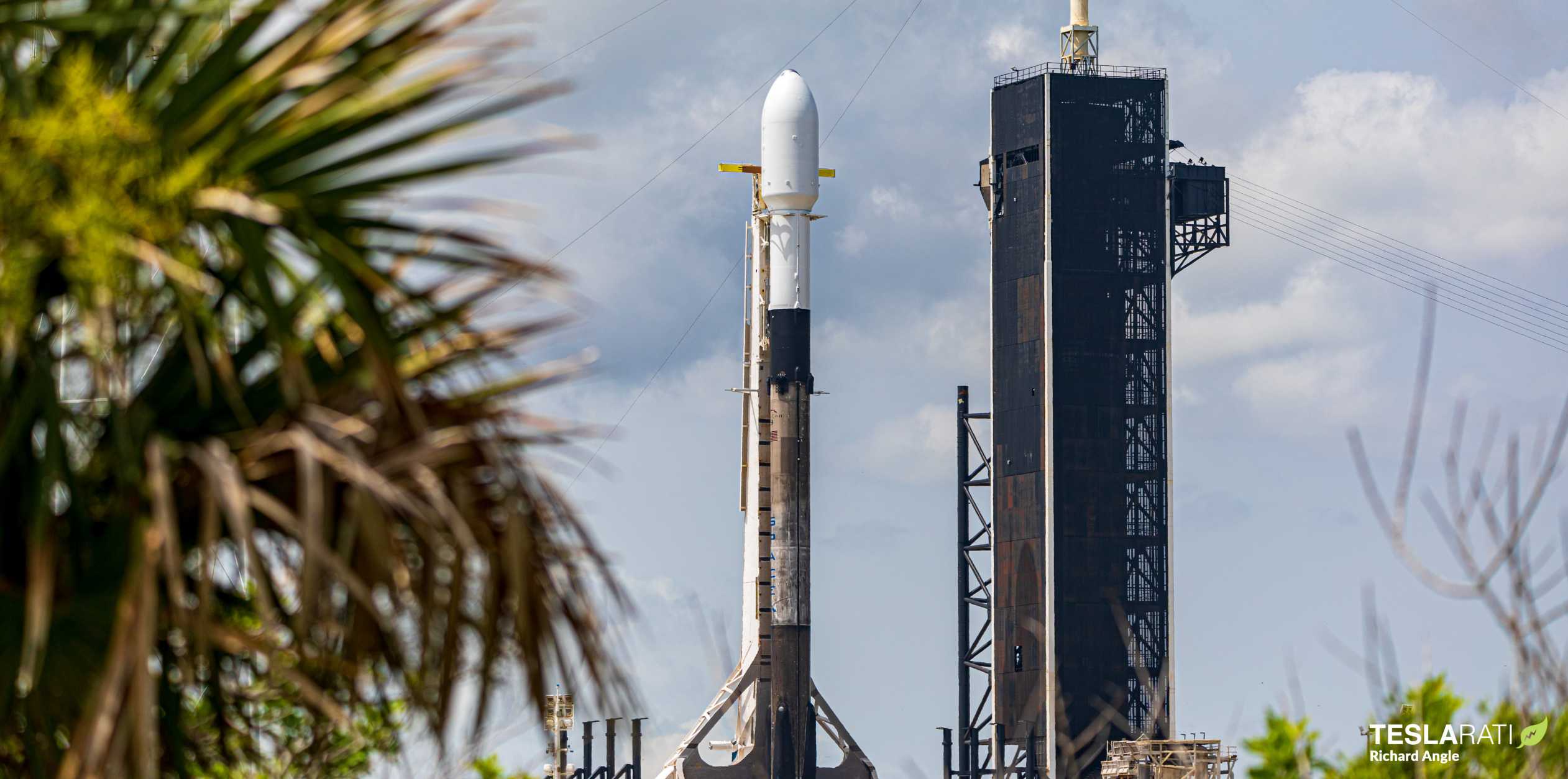
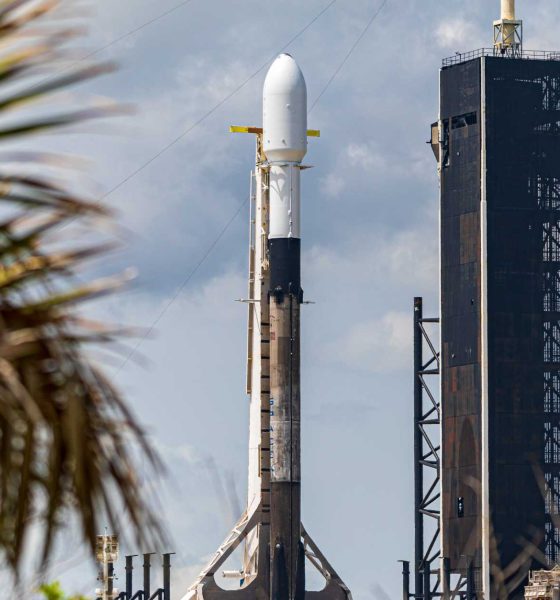
News
SpaceX Falcon 9 rocket to kick off busy month of launches with 10th Starlink mission
A Falcon 9 rocket is set to kick off a busy July of launches with SpaceX’s tenth Starlink satellite mission and second Starlink rideshare, while also (hopefully) solidifying Falcon 9 reusability.
For Falcon 9 booster B1051, the Starlink V1 L9 mission will be its fifth launch, making it the third SpaceX rocket to fly on five separate orbital-class missions. If B1051 manages to successfully land aboard drone ship of Course I Still Love You (OCISLY) some 630 km (~390 mi) off the coast of Florida, it will also become the second Falcon 9 booster to launch and land five times in a row.
Starlink-9 is just one of four separate launches SpaceX has scheduled this month, following a ~10-day delay that prevented June 2020 from becoming the company’s first four-launch month. The mission will also be the eighth Starlink launch this year, potentially leaving SpaceX 40% of the way to a 20-launch annual target roughly 52% of the way through the year.
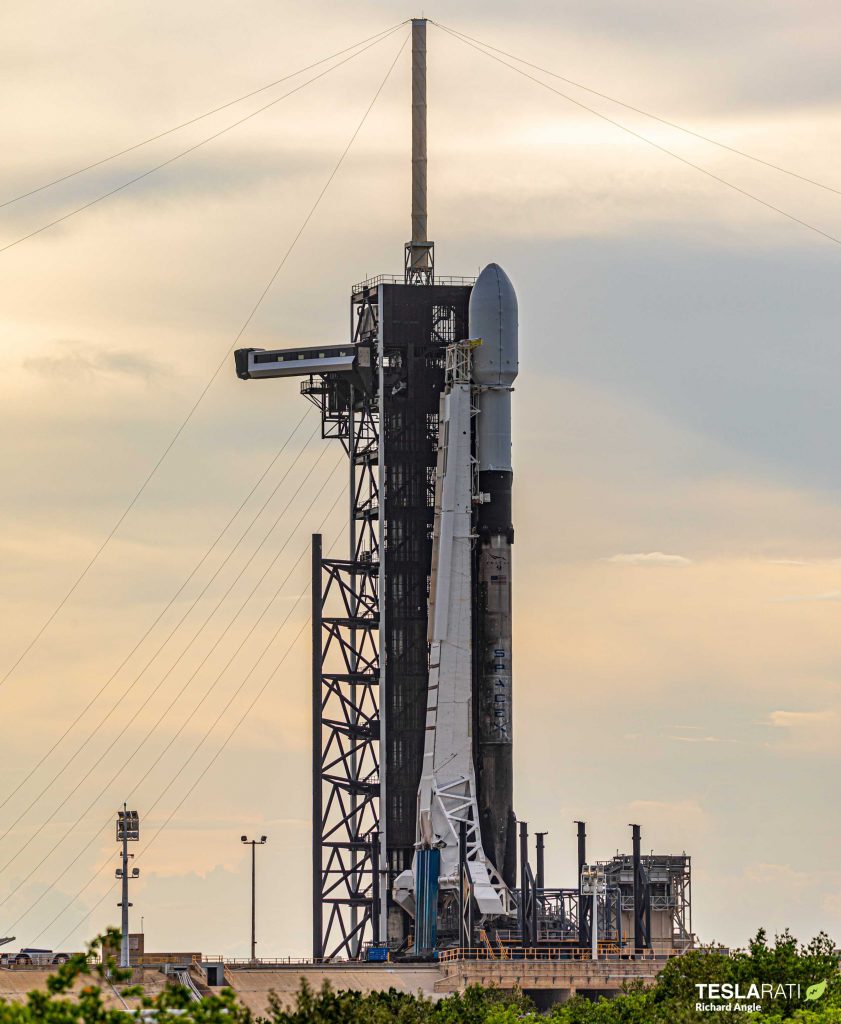
If successful, Falcon 9 B1051’s fifth launch and landing will make the booster just one of two to have accomplished the feat and survived after Falcon 9 B1049 completed its fifth launch on June 3rd, 2020. Back on March 14th, Falcon 9 booster B1048 technically became the first SpaceX rocket to successfully complete five orbital-class launches, although an extremely rare in-flight engine failure came close to prematurely ending the mission and fully precluded a successful landing.
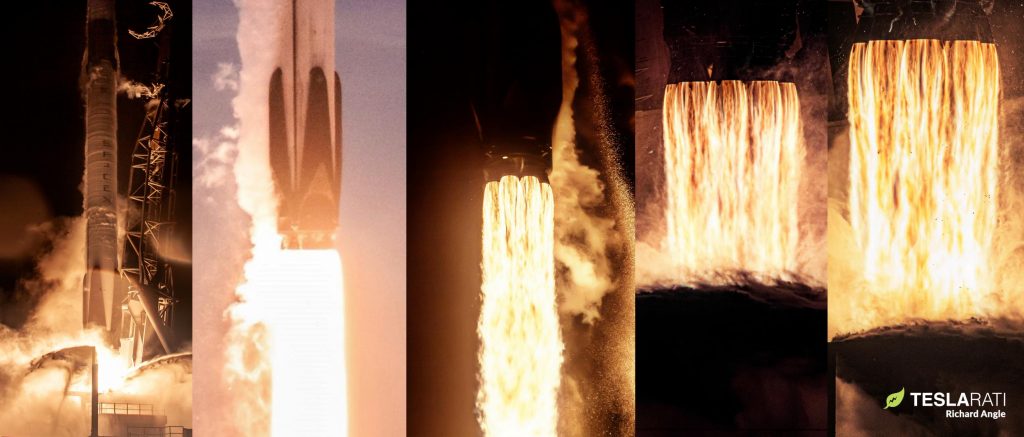
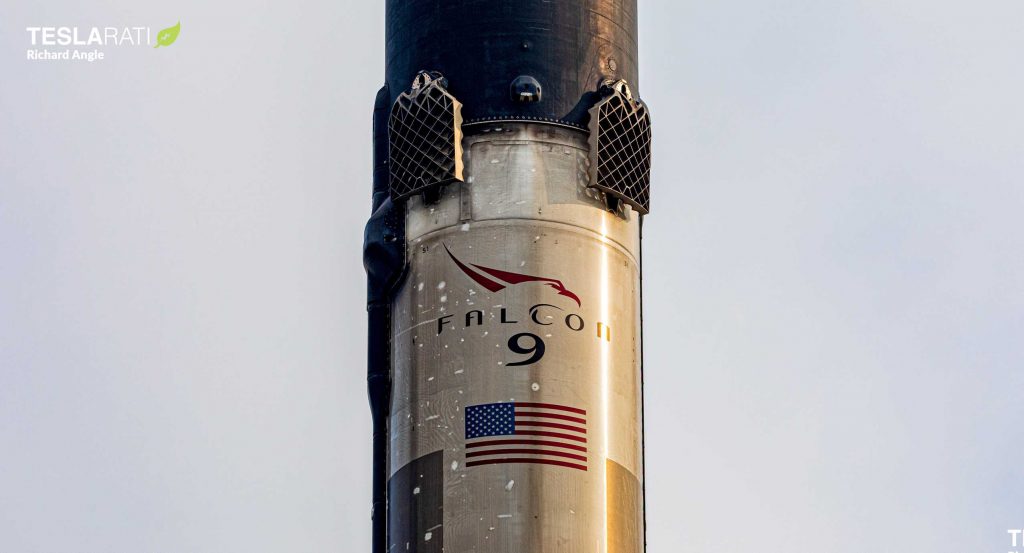
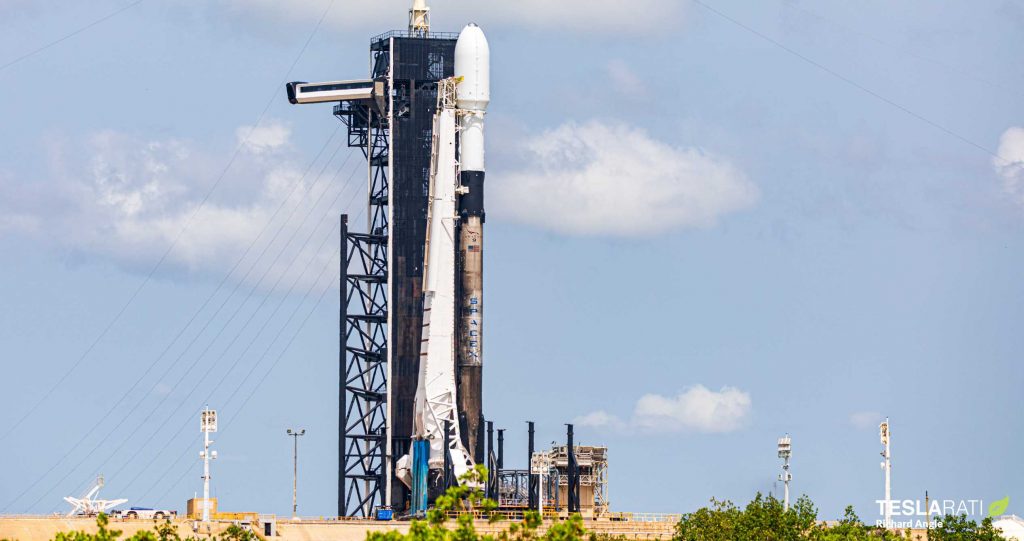
SpaceX returned to flight barely one month later when Falcon 9 booster B1051 launched for the fourth time in support of the Starlink-6 mission, a strong sign that B1048’s engine failure was indeed caused by a mistake during refurbishment and not a design flaw. Since then, SpaceX has completed five missions, passing milestones like Crew Dragon’s inaugural NASA astronaut launch and Falcon 9’s first landing after an operational satellite launch for the US military.
Starlink-9 isn’t quite as groundbreaking but it still pushes SpaceX’s Starlink launches into the double-digits just 14 months after they began. Excluding the first Starlink v0.9 satellites SpaceX launched in May 2019, the company will have technically completed nine Starlink v1.0 launches in less than eight months if L1 V9 goes off without a hitch later today. All ~530 of those satellites can technically be counted on to one day serve high-quality internet to customers almost anywhere on Earth, while it’s unclear if the ~55 v0.9 satellites still in orbit will ever serve as part of the commercially operational constellation.
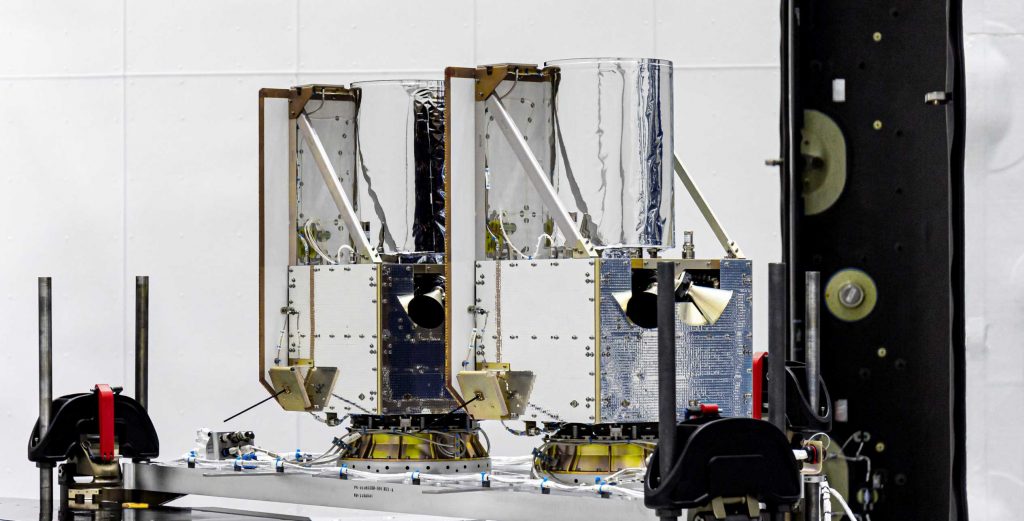
Starlink-9 will be SpaceX’s second Starlink rideshare and is set to carry two LeoStella-built BlackSky Earth imaging spacecraft into orbit (literally) on top of 57 Starlink v1.0 internet satellites. While the ~$2M in revenue SpaceX likely generated with the rideshare doesn’t come close to recouping the ~$25M spent on each Starlink launch, the cumulative value of 10-15% savings over dozens or hundreds of launches will be far more substantial than it might seem at first glance.
Regardless, Falcon 9 B1051, 57 Starlink satellites, and two rideshare passengers are scheduled to lift off from Kennedy Space Center (KSC) Launch Complex 39A no earlier than (NET) 11:59 am EDT (15:59 UTC) on July 8th. As usual, SpaceX will offer live coverage of the launch beginning around 15 minutes before liftoff.
Check out Teslarati’s Marketplace! We offer Tesla accessories, including for the Tesla Cybertruck and Tesla Model 3.

Elon Musk
Elon Musk’s X will start using a Tesla-like software update strategy
The initiative seems designed to accelerate updates to the social media platform, while maintaining maximum transparency.

Elon Musk’s social media platform X will adopt a Tesla-esque approach to software updates for its algorithm.
The initiative seems designed to accelerate updates to the social media platform, while maintaining maximum transparency.
X’s updates to its updates
As per Musk in a post on X, the social media company will be making a new algorithm to determine what organic and advertising posts are recommended to users. These updates would then be repeated every four weeks.
“We will make the new 𝕏 algorithm, including all code used to determine what organic and advertising posts are recommended to users, open source in 7 days. This will be repeated every 4 weeks, with comprehensive developer notes, to help you understand what changed,” Musk wrote in his post.
The initiative somewhat mirrors Tesla’s over-the-air update model, where vehicle software is regularly refined and pushed to users with detailed release notes. This should allow users to better understand the details of X’s every update and foster a healthy feedback loop for the social media platform.
xAI and X
X, formerly Twitter, has been acquired by Elon Musk’s artificial intelligence startup, xAI last year. Since then, xAI has seen a rapid rise in valuation. Following the company’s the company’s upsized $20 billion Series E funding round, estimates now suggest that xAI is worth tens about $230 to $235 billion. That’s several times larger than Tesla when Elon Musk received his controversial 2018 CEO Performance Award.
As per xAI, the Series E funding round attracted a diverse group of investors, including Valor Equity Partners, Stepstone Group, Fidelity Management & Research Company, Qatar Investment Authority, MGX, and Baron Capital Group, among others. Strategic partners NVIDIA and Cisco Investments also continued support for building the world’s largest GPU clusters.
News
Tesla FSD Supervised wins MotorTrend’s Best Driver Assistance Award
The decision marks a notable reversal for the publication from prior years, with judges citing major real-world improvements that pushed Tesla’s latest FSD software ahead of every competing ADAS system.

Tesla’s Full Self-Driving (Supervised) system has been named the best driver-assistance technology on the market, earning top honors at the 2026 MotorTrend Best Tech Awards.
The decision marks a notable reversal for the publication from prior years, with judges citing major real-world improvements that pushed Tesla’s latest FSD software ahead of every competing ADAS system. And it wasn’t even close.
MotorTrend reverses course
MotorTrend awarded Tesla FSD (Supervised) its 2026 Best Tech Driver Assistance title after extensive testing of the latest v14 software. The publication acknowledged that it had previously criticized earlier versions of FSD for erratic behavior and near-miss incidents, ultimately favoring rivals such as GM’s Super Cruise in earlier evaluations.
According to MotorTrend, the newest iteration of FSD resolved many of those shortcomings. Testers said v14 showed far smoother behavior in complex urban scenarios, including unprotected left turns, traffic circles, emergency vehicles, and dense city streets. While the system still requires constant driver supervision, judges concluded that no other advanced driver-assistance system currently matches its breadth of capability.
Unlike rival systems that rely on combinations of cameras, radar, lidar, and mapped highways, Tesla’s FSD operates using a camera-only approach and is capable of driving on city streets, rural roads, and freeways. MotorTrend stated that pure utility, the ability to handle nearly all road types, ultimately separated FSD from competitors like Ford BlueCruise, GM Super Cruise, and BMW’s Highway Assistant.
High cost and high capability
MotorTrend also addressed FSD’s pricing, which remains significantly higher than rival systems. Tesla currently charges $8,000 for a one-time purchase or $99 per month for a subscription, compared with far lower upfront and subscription costs from other automakers. The publication noted that the premium is justified given FSD’s unmatched scope and continuous software evolution.
Safety remained a central focus of the evaluation. While testers reported collision-free operation over thousands of miles, they noted ongoing concerns around FSD’s configurable driving modes, including options that allow aggressive driving and speeds beyond posted limits. MotorTrend emphasized that, like all Level 2 systems, FSD still depends on a fully attentive human driver at all times.
Despite those caveats, the publication concluded that Tesla’s rapid software progress fundamentally reshaped the competitive landscape. For drivers seeking the most capable hands-on driver-assistance system available today, MotorTrend concluded Tesla FSD (Supervised) now stands alone at the top.
News
Elon Musk’s Grokipedia surges to 5.6M articles, almost 79% of English Wikipedia
The explosive growth marks a major milestone for the AI-powered online encyclopedia, which was launched by Elon Musk’s xAI just months ago.

Elon Musk’s Grokipedia has grown to an impressive 5,615,201 articles as of today, closing in on 79% of the English Wikipedia’s current total of 7,119,376 articles.
The explosive growth marks a major milestone for the AI-powered online encyclopedia, which was launched by Elon Musk’s xAI just months ago. Needless to say, it would only be a matter of time before Grokipedia exceeds English Wikipedia in sheer volume.
Grokipedia’s rapid growth
xAI’s vision for Grokipedia emphasizes neutrality, while Grok’s reasoning capabilities allow for fast drafting and fact-checking. When Elon Musk announced the initiative in late September 2025, he noted that Grokipedia would be an improvement to Wikipedia because it would be designed to avoid bias.
At the time, Musk noted that Grokipedia “is a necessary step towards the xAI goal of understanding the Universe.”
Grokipedia was launched in late October, and while xAI was careful to list it only as Version 0.1 at the time, the online encyclopedia immediately earned praise. Wikipedia co-founder Larry Sanger highlighted the project’s innovative approach, noting how it leverages AI to fill knowledge gaps and enable rapid updates. Netizens also observed how Grokipedia tends to present articles in a more objective manner compared to Wikipedia, which is edited by humans.
Elon Musk’s ambitious plans
With 5,615,201 total articles, Grokipedia has now grown to almost 79% of English Wikipedia’s article base. This is incredibly quick, though Grokipedia remains text-only for now. xAI, for its part, has now updated the online encyclopedia’s iteration to v0.2.
Elon Musk has shared bold ideas for Grokipedia, including sending a record of the entire knowledge base to space as part of xAI’s mission to preserve and expand human understanding. At some point, Musk stated that Grokipedia will be renamed to Encyclopedia Galactica, and it will be sent to the cosmos.
“When Grokipedia is good enough (long way to go), we will change the name to Encyclopedia Galactica. It will be an open source distillation of all knowledge, including audio, images and video. Join xAI to help build the sci-fi version of the Library of Alexandria!” Musk wrote, adding in a later post that “Copies will be etched in stone and sent to the Moon, Mars and beyond. This time, it will not be lost.”








